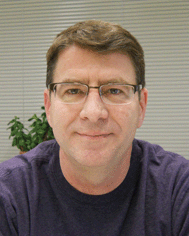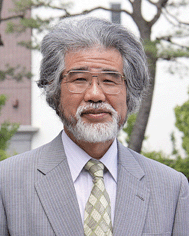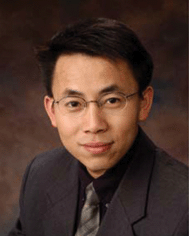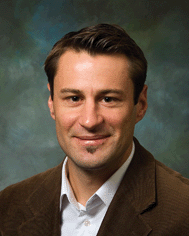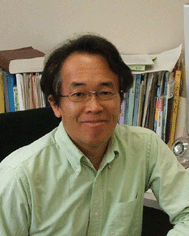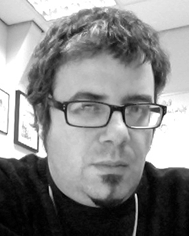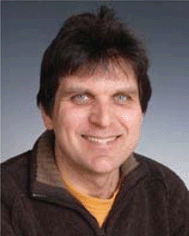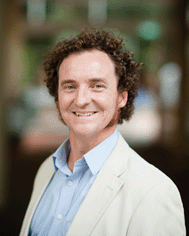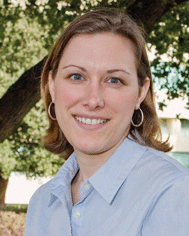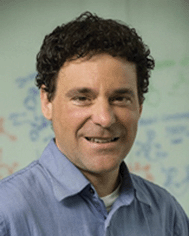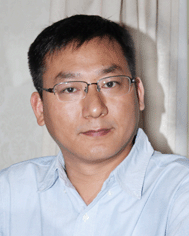DOI:
10.1039/C2BM90007F
(Editorial)
Biomater. Sci., 2013,
1, 109-113
Meet the Editorial Board
Professor Phil Messersmith, Editor-in-Chief
Phillip B. Messersmith is a professor of Biomedical Engineering, Materials Science and Engineering and Chemical and Biological Engineering at Northwestern University. He earned his B.S. degree in life sciences in 1985 and his Ph.D. degree in materials science and engineering in 1993 from the University of Illinois at Urbana. Dr Messersmith was a postdoctoral fellow at Cornell University from 1993–1994 and a faculty member at the University of Illinois at Chicago from 1994–1997. His research interests include studies of biological adhesives, including mussel adhesive proteins and gecko adhesives, the design of biomimetic adhesive polymers and polymer composites, the development of novel biomaterials for regenerative medicine, and antifouling polymer surfaces. His awards and honours include a young investigator award from the Whitaker Foundation, a MERIT award from the National Institutes of Health, and the Langmuir Lecture Award from the American Chemical Society. Dr Messersmith is a fellow of the American Institute for Medical and Biological Engineering, the Royal Society of Chemistry, and of Biomaterials Science and Engineering. Dr Messersmith is also a member of the editorial/advisory boards of
Soft Matter,
Nanomedicine and
Biointerphases and Biomedical Materials.
Professor Norio Nakatsuji, Editor-in-Chief
Prof. Nakatsuji received his Doctor of Science in developmental biology from the Graduate School of Science at Kyoto University in 1977. He then spent several years in postdoctoral training at Umea University in Sweden, Massachusetts Institute of Technology and George Washington University in the USA, and the MRC Mammalian Development Unit in the UK. He returned to Japan to join the Meiji Institute of Health Science in 1984, and became a professor at the National Institute of Genetics in 1991. In 1999, he moved to the newly reorganized Institute for Frontier Medical Sciences at Kyoto University, which is devoted to both basic and application research in regenerative medicine. His main research interests have been the developmental biology of mammals focusing on germ cell lineage, nervous systems, and pluripotent stem cells. In 2003, his group succeeded in deriving human embryonic stem (hES) cell lines and distributing them to other scientists. Since 2007, he is the founding director of Kyoto University's Institute for Integrated Cell-Material Sciences (iCeMS), an institute which aims to advance cross-disciplinary research and technological innovation based on cell biology, chemistry and physics. Recently, his research group has focused on multidisciplinary research using human ES and iPS cells in collaboration with chemical biology and material science groups, which includes the development of chemical tools for stem cell control and the creation of disease model cells for research and drug discovery.
Professor Jianjun Cheng, Associate Editor
Jianjun Cheng received a B.S. degree in Chemistry from Nankai University, China, in 1993, a M.S. degree in chemistry from Southern Illinois University at Carbondale in 1996, and a Ph.D. degree in materials science from the University of California, Santa Barbara in 2001. From 2001 to 2004, Cheng was a senior scientist and a project leader at Insert Therapeutics, Inc. After working as a postdoctoral fellow at Massachusetts Institute of Technology from 2004 to 2005, Cheng joined the faculty of the University of Illinois at Urbana-Champaign (UIUC) in 2005. He is currently an associate professor of Materials Science and Engineering, and is a faculty affiliate with the Department of Chemistry, Department of Bioengineering, the Beckman Institute for Advanced Science and Technology, Micro and Nanotechnology Laboratory, Institute of Genomic Biology, and the Cancer Center of the University of Illinois. Cheng's research is focused on the design, synthesis and application of polymeric- and nano-biomaterials in drug and gene delivery. He has received a Prostate Cancer Foundation Competitive Award (2007), a National Science Foundation CAREER Award (2008) and a NIH Director's New Innovator Award (2010).
Professor Matthias Lutolf, Associate Editor
Matthias Lutolf is Head of the Laboratory of Stem Cell Bioengineering (LSCB) which belongs to the Institute of Bioengineering at Ecole Polytechnique Fédérale de Lausanne (EPFL) in Switzerland. He was trained as a Materials Scientist at ETH Zurich where he also carried out his Ph.D. studies on the development of a novel class of biologically responsive synthetic hydrogels for tissue engineering (2004). In 2005 Lutolf joined the Baxter Laboratory in Stem Cell Biology at Stanford University to work on stem cell biology with Postdoc fellowships from the Swiss National Science Foundation and the Leukemia and Lymphoma Society. In 2007 Lutolf won a prestigious European Young Investigator (EURYI) award to start up his independent research at EPFL. His work interfaces biomaterials engineering, microfabrication and stem cell biology to elucidate how microenvironmental signals control stem cell fate and to find better means to grow stem cells
in vitro.
Professor Hiroshi Sugiyama, Associate Editor
Hiroshi Sugiyama obtained his Ph.D. in 1984 with Teruo Matuura at Kyoto University. After postdoctoral studies at the University of Virginia with Sidney M. Hecht, he returned to Kyoto University in 1986 as an assistant professor and became an associate professor in the Isao Saito group in 1993. He was promoted a full professor of the Institute for Medical and Dental Engineering at Tokyo Medical and Dental University in 1996. He has been a professor of chemistry at the Graduate School of Science at Kyoto University since 2003. In 2008 he was appointed as a principle investigator of iCeMS. His research interests involve the bioorganic chemistry of nucleic acids and his research group is defining the chemical principles underlying the recognition, reactivity and structure of nucleic acids. He has been awarded a Nippon IBM award in 1999, and The Creative Work Award of the Chemical Society of Japan in 2005. He is a member of the Editorial Advisory Board of
ChemBioChem (since 2005) and
J. Am. Chem. Soc. (since 2009).
Professor Giuseppe Battaglia, Editorial Board member
Giuseppe, or as most people call him, Beppe, obtained his “Laura” in Chemical Engineering in 2001 from the University of Palermo (Italy), followed by a period of industrial research at the ICI Strategic Technology Group (now part of AkzoNobel) at Wilton, UK. In 2002, he joined Prof. Anthony Ryan's research group for a Ph.D. in Physical Chemistry at the Department of Chemistry at the University of Sheffield (UoS). In 2006, immediately after submitting his Ph.D. thesis, Beppe was appointed to a fixed term lectureship within the Biomaterials and Tissue Engineering group in the Dept. of Materials Science and Engineering. Three years later he relocated to a permanent position within the Department of Biomedical Science where he was promoted to Senior Lecturer in 2009 and to a Personal Chair in 2011. Beppe is now the Professor of Synthetic Biology and one of the youngest professors in the University. Beppe is the recipient of the prestigious Human Frontiers of Science Young Investigator Program together with Prof. A. Engler (UCSD) and the 2011 ERC STG Award as well as the 2011 APS/IoP Polymer Physics Exchange Lecture and the 2011 GSK Emerging Scientist Award. Beppe's research is focused on the investigation of the specific design rules behind inter/intramolecular interactions and the self-assembly of soft matter systems often taking inspiration from biological systems such as cells and viruses. These are subsequently translated into the engineering of nanostructured biomaterials such as nanoscopic vectors and/or synthetic scaffolds.
Professor Mark Bradley, Editorial Board member
Mark received his doctorate from the University of Oxford in 1989 under the supervision of Professor Sir Jack Baldwin, followed by post-doctoral studies at Harvard Medical School and returned to the UK as a Royal Society Fellow at Southampton University in the early 90's. In 1996 at the age of 34 he was made a Professor of Combinatorial Chemistry. He has been elected to fellowships of both the Royal Society of Chemistry and the Royal Society of Edinburgh, and has held the Novartis Young Investigator Award, the Zeneca Research Award for Organic Chemistry, the GlaxoWellcome Award for Innovative Chemistry, the Pfizer Award in Organic Chemistry and more recently, the Novartis Chemistry Lectureship and the Award from the Society of Combinatorial Sciences. In 2011 he was awarded the Chancellors Award for research. His group has published over 240 peer reviewed papers and 20 patents and more than 65 Ph.D. students have graduated from his group.
Three themes dominate at this time:
(i) The development and exploitation of polymer microarray technology for the identification and application of polymers for controlling and modulating cells.
(ii) The development of “smart” fluorescent reporters for clinical optical imaging.
(iii) In vivo catalytic chemistry.
Professor Justin Cooper-White, Editorial Board member
Professor Cooper-White graduated with his Bachelors of Engineering (Chemical) in 1991, University of Queensland, and thereafter worked for Shell (Australia) Pty. Ltd. for 5 years as a practicing chemical engineer and processing manager. He commenced his Ph.D. in 1996 and was awarded his Ph.D. in Chemical Engineering (Biomedical Polymers), UQ, in March 2000. He subsequently held a postdoctoral position at the University of Melbourne (UMelb) under the mentorship of Prof. David V. Boger, and joined the Department of Chemical and Biomolecular Engineering at UMelb as a tenured Senior Lecturer in early 2003. In 2004 he move to the University of Queensland (UQ) to head a new initiative in Biomaterials and Tissue Engineering in the Department of Chemical Engineering and in 2007 was promoted to Professor of Bioengineering. He currently holds the positions of Group Leader within the Australian Institute for Bioengineering and Nanotechnology (AIBN, UQ), (inaugural) Director of the Queensland Node of the Australian National Fabrication Facility (ANFF-Q), and Associate Dean (Research) for the Faculty of Engineering, Architecture and Information Technology at UQ. Prof. Cooper-White has over 150 refereed publications and over 300 conference abstracts. His work has appeared in high impact journals in his field, including
Biomaterials,
Lab on a Chip,
Biomacromolecules,
Stem Cells,
Journal of Cell Science,
Stem Cells and Development,
PLoSONE and
Biotechnology and Bioengineering, and has also produced 6 Worldwide patents that have reached National Phase Entry in USA, Europe and Australia.
Professor Sarah Heilshorn, Editorial Board member
Sarah Heilshorn completed her undergraduate studies in chemical engineering at Georgia Tech. She then earned her M.S. and Ph.D. in chemical engineering at the California Institute of Technology (Caltech) under the supervision of David A. Tirrell. While a graduate student, she was also a visiting scholar in the Department of Polymer Science at the Kyoto Institute of Technology through a National Science Foundation East Asia Fellowship. She was awarded the Caltech Everhart Lectureship for her Ph.D. thesis work in 2004. Following this, Prof. Heilshorn was a postdoctoral scholar with Mu-ming Poo at the University of California, Berkeley, in the Department of Molecular and Cell Biology. In 2006 she joined Stanford University as an Assistant Professor in the Department of Materials Science & Engineering. She also holds courtesy faculty appointments in the Departments of Bioengineering and Chemical Engineering. Her research laboratory studies the dynamics of biological and bio-inspired systems at multiple length scales, including the molecular through to the multi-cellular level. Current topics of investigation include the design of injectable materials for stem cell and drug delivery, protein-engineered materials for regenerative medicine scaffolds, and peptide-based self-assembly materials for templated nanoparticle synthesis. In 2009, she was selected for the National Science Foundation CAREER Award and the National Institutes of Health New Innovator Award for young faculty.
Professor Patrick Stayton, Editorial Board member
Patrick Stayton currently serves as the Washington Research Foundation Professor in the Department of Bioengineering at the University of Washington. He is the founding Director of the Institute for Molecular Engineering and Sciences, and the Center for Intracellular Delivery of Biologics. He received his B.S. in Biology (summa cum laude) from Illinois State University in 1984, his Ph.D. in Biochemistry from the University of Illinois in 1989, and was a Postdoctoral Research Associate at the Beckman Institute for Advanced Science and Technology, also at the University of Illinois.
Dr Stayton's eclectic research group works at the interface of fundamental molecular science and applied molecular bioengineering. His laboratory has fundamental projects aimed at elucidating the basic principles underlying biomolecular recognition, and connected projects applying these principles to medical applications in the drug delivery, medical diagnostics, and regenerative medicine fields. He has published over 200 scientific papers. Dr Stayton has a strong interest in translating the group's research, has been awarded several patents, and is a co-founder of the startup companies PhaseRx Inc., based on his group's biologic drug delivery work, and Nexgenia, based on their diagnostic work.
Dr Stayton has been elected as a Fellow of the American Institute for Medical and Biological Engineering, and has been the recipient of the Clemson Award from the Society for Biomaterials and the CRS-Cygnus Recognition Award from the Controlled Release Society. He served as Co-Chair of the Gordon Conference on Drug Carriers in Medicine and Biology in 2010. He has also been awarded the 2009 Faculty Research Innovation Award, UW College of Engineering, and the Distinguished Teacher and Mentor Award from the Department of Bioengineering.
Professor Jun Wang, Editorial Board member
Jun Wang received a joint B.S. in Chemistry and Cell Biology at Wuhan University in 1993 in China and a Ph.D. in Polymer Chemistry and Physics from Wuhan University in 1999. He has been a postdoctoral fellow at Johns Hopkins Singapore and the Johns Hopkins University School of Medicine from 1999 to 2004. In 2004 he joined the faculty of the University of Science and Technology of China as a professor of Life Sciences and Polymer Chemistry. He is a joint professor of the Hefei National Laboratory for Physical Sciences at the Microscale of China. He received the Capsugel Innovation Award in Controlled Drug Delivery from the Controlled Release Society in 2001. He was selected as the awardee of the “One Hundred Talents” of the Chinese Academy of Science in 2005 and received the “Outstanding Young Scholar Award” of the National Science Foundation of China in 2011. His main research interest is biomaterials for drug, siRNA delivery and nanomedicine.
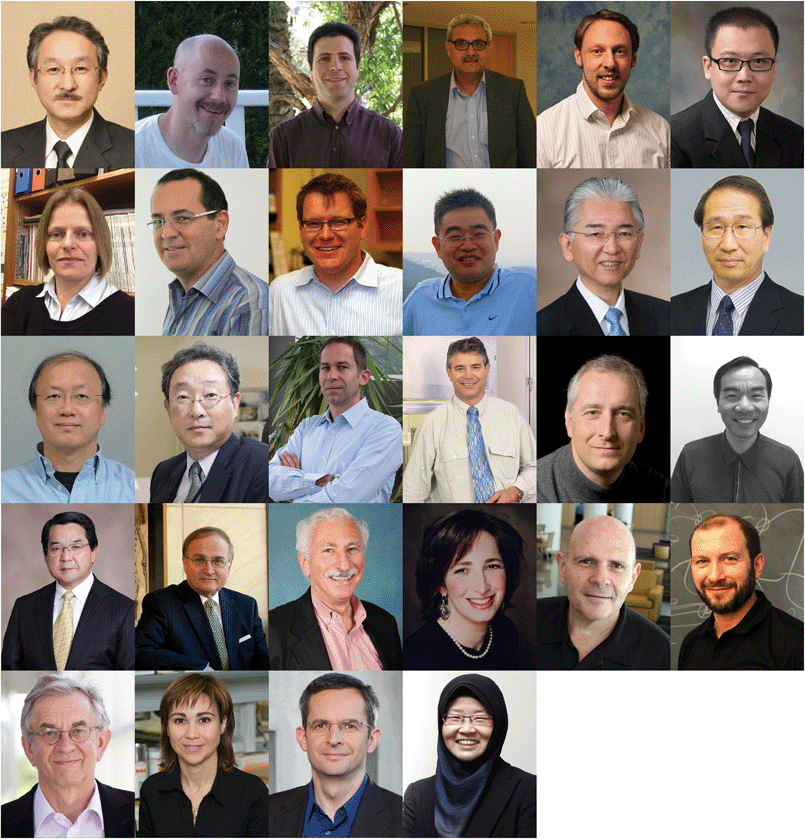 |
| | Fig. 1 Advisory Board members (from left to right, row 1: Kazunari Akiyoshi, Cameron Alexander, Frank Caruso, Ashutosh Chilkoti, Andrew Dove and Hongwei Duan; row 2: Julie Gough, Jeff Hubbell, Darrell Irvine, Jian Ji, Kazunori Kataoka and Susumu Kitagawa; row 3: Akihiro Kusumi, Ick Chan Kwon, Sebastien Lecommandoux, Keith McLean, Wolfgang Meier and Steve Oh; row 4: Teruo Okano, Nicholas Peppas, Buddy Ratner, Molly Shoichet, Samuel Stupp and Igal Szleifer; row 5: Markus Textor, Maria Vicent, Carsten Werner and Jackie Ying. Not pictured: Xingdong Zhang). | |
|
| This journal is © The Royal Society of Chemistry 2013 |
Click here to see how this site uses Cookies. View our privacy policy here. 

